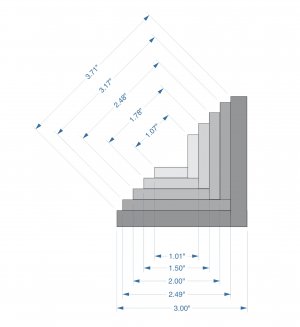- Joined
- Jul 15, 2020
- Messages
- 421
The attached chart shows the width of the V for angle iron with various leg lengths. All angle iron shown is 1/4" wall except the largest, which is 3/8". The drawing software added a thousandth or so to some of the dimensions, so they are ball park. Since we are concerned with the inside of the V, we can't use the Pythagorean theorem based on the leg length. We could use the sum of the squares of (each leg minus the wall thickness) to arrive at the square of the V width.


